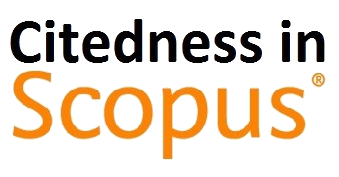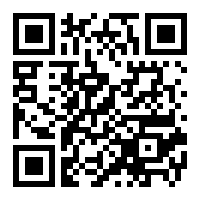Mobile Device Management for the Use of Bring Your Own Device (BYOD) as Company Data Security during the Covid-19 Pandemic
(1) Universitas Mercu Buana, Indonesia
(2) Universitas Mercu Buana, Indonesia
(*) Corresponding Author
Abstract
Since the end of 2019 a large outbreak has hit almost the entire world, namely the Covid-19 pandemic. COVID-19 has encouraged millions of employees to change their jobs from coming to the office to working at home. This phenomenon is known as Bring Your Own Device (BYOD). Good policies and guidelines on the use of BYOD must be followed to prevent some form of security breach and maintain user privacy, confidentiality, integrity, and availability of organisational data, and the same security on the devices of employees who use their own devices to process company data. To solve these problems, researchers implemented Mobile Device Management with VMware workspace one uem tools to monitor, control and protect mobile devices. The system uses Windows server. The results of the research can be input to the company to secure and monitor company data on employee work devices.
Full Text:
PdfReferences
Safitri, A. L. (2022). Pengaruh Persepsi Risiko, Kualitas Situs Web dan Kepercayaan Konsumen terhadap Keputusan Pembelian Online Shop Fashion di Masa Pandemi Covid-19 (Studi pada Pelanggan Zalora. co. id di Kota Semarang). Jurnal Ekonomi dan Bisnis, 1(1), 26-35.
Yuhandika, G., & Meilina, P. (2022). Aplikasi Deteksi Dini Covid-19 Terhadap Karyawan Pada Perusahaan Dengan Menggunakan Metode Forward Chaining Berbasis Web. JUST IT: Jurnal Sistem Informasi, Teknologi Informasi dan Komputer, 12(1).
Endo, T., Tanimoto, S., Iwashita, M., Kobayashi, T., Sato, H., & Kanai, A. (2022). Risk Assessment Quantification for Bring Your Own Device Based on Practical Viewpoints. International Journal of Service and Knowledge Management, 6(1).
Kanerva, L. (2021). Integrating a mobile device management solution in Android.
Papadakis, S., Kalogiannakis, M., Sifaki, E., & Vidakis, N. (2018). Evaluating moodle use via smart mobile phones. A case study in a Greek university. EAI Endorsed Transactions on Creative Technologies, 5(16), e1-e1.
Schaal, S., & Lude, A. (2015). Using mobile devices in environmental education and education for sustainable development—Comparing theory and practice in a nation wide survey. Sustainability, 7(8), 10153-10170.
Lee, K. B., & Salman, R. (2012). The design and development of mobile collaborative learning application using android. Journal of Information Technology and Application in Education, 1(1), 1-8.
Retnowardhani, A., Diputra, R. H., & Triana, Y. S. (2019). Security risk analysis of bring your own device system in manufacturing company at Tangerang. TELKOMNIKA (Telecommunication Computing Electronics and Control), 17(2), 753-762.
Chandra, N. A., & Sadikin, M. (2020). ISM Application Tool, A Contribution to Address the Barrier of Information Security Management System Implementation. Journal of information and communication convergence engineering, 18(1), 39-48.
Utari, H., & Triana, Y. S. (2019). Sistem informasi monitoring siswa menggunakan sms gateway. Jurnal RESTI (Rekayasa Sistem dan Teknologi Informasi), 3(3), 328-335.
Koyama, H., Nakagawa, Y., Tanimoto, S., Endo, T., Hatashima, T., & Kanai, A. (2022, July). A Study of Risk Assessment Quantification for Secure Telework. In 2022 12th International Congress on Advanced Applied Informatics (IIAI-AAI) (pp. 574-580). IEEE.
Aggarwal, R., Visram, S., Martin, G., Sounderajah, V., Gautama, S., Jarrold, K., ... & Darzi, A. (2022). Defining the Enablers and Barriers to the Implementation of Large-scale, Health Care–Related Mobile Technology: Qualitative Case Study in a Tertiary Hospital Setting. JMIR mHealth and uHealth, 10(2), e31497.
Rhee, K., Jeon, W., & Won, D. (2012). Security requirements of a mobile device management system. International Journal of Security and Its Applications, 6(2), 353-358.
Liu, L., Moulic, R., & Shea, D. (2010, November). Cloud service portal for mobile device management. In 2010 IEEE 7th International Conference on E-Business Engineering (pp. 474-478). IEEE.
Du Toit, J., Ellefsen, I., & Von Solms, S. (2016, May). Bring your own disaster recovery (BYODR). In 2016 IST-Africa Week Conference (pp. 1-12). IEEE.
Mahindru, R. (2013). Bring Your Own Device (Byod): An Empirical Study Across Industries. Clear International Journal of Research in Commerce & Management, 4(12).
Hutchens, B. A. (2017). Employer Liability and Bring Your Own Device: Do Existing Regulations Support Employer Liability for a Compromised Personal Device?.
Angkat, A. W. P. (2022). Pengujian Tingkat Kelayakan Aplikasi Virtual Reality 360 Menggunakan System Usability Scale (Doctoral dissertation, Universitas Siliwangi).
Faqih, M., Kusumaningsih, A., & Kurniawati, A. (2018). Penerapan Augmented Reality Pada Serious Game Edukasi Penyakit Gigi. Simetris: Jurnal Teknik Mesin, Elektro dan Ilmu Komputer, 9(2), 1033-1042.
Waluyo, S. D., & Tresnawati, D. (2017). Pengembangan Sistem Informasi Administrasi Kependudukan di Kantor Kelurahan Berbasis Multimedia. Jurnal Algoritma, 14(1), 1-6.
M. Harris, K. Patten, E. Regan and J.Fjermesat, “Mobile and Connected Device Security Considerations: A Dilemma for Small and Medium Enterprise Business Mobility?,” Proc. of the 18th Americas Conference on Information Systems (AMCIS), pp. 1-7, 2012.
G. Kulkarni, R. Shelke, R. Palwe, V. Solanke, S. Belsare, and S. Mohite, “Mobile cloud computing-bring your own device,” in 2014 Fourth International Conference on Communication Systems and Network Technologies, pp. 565-568, 2014
A. Scarfo, “New security perspectives around BYOD,” in 2012 Seventh International Conference on Broadband, Wireless Computing, Communication and Applications, pp. 446-451, 2012
Y. Song, and S. C. Kong, “Affordances and constraints of BYOD (Bring Your Own Device) for learning and teaching in higher education: Teachers’ perspectives,” The Internet and Higher Education, vol. 32 no. 1, pp. 39-46, 2017
B. Lebek, , K. Degirmenci and M. H. Breitner, “ Investigating the influence of security, privacy, and legal concerns on employees' intention to use BYOD mobile devices,” 2013
M. K. Abd. Mohsin and Z. Ab Hamid, “Bring Your Own Device (BYOD): Legal Protection of The Employee in Malaysia”, MJSSH, vol. 7, no. 7, p. e001609, Jul. 2022.
Rhee, K., Won, D., Jang, SW. et al. Threat modeling of a mobile device management system for secure smart work. Electron Commer Res 13, 243–256 (2013). https://doi.org/10.1007/s10660-013-9121-4.
M. K. Abd. Mohsin and Z. Ab Hamid, “Bring Your Own Device (BYOD): Legal Protection of The Employee in Malaysia”, MJSSH, vol. 7, no. 7, p. e001609, Jul. 2022.
A. Weeger et al., “Determinants of Intention to Participate in Corporate BYOD-Programs: The Case of Digital Natives,” Inf. Syst. Front., vol. 22, no. 1, pp. 1–17, 2020, doi: 10.1007/s10796-018-9857-4
DOI: https://doi.org/10.30645/ijistech.v6i4.269
Refbacks
- There are currently no refbacks.
Jumlah Kunjungan:
Published Papers Indexed/Abstracted By:












